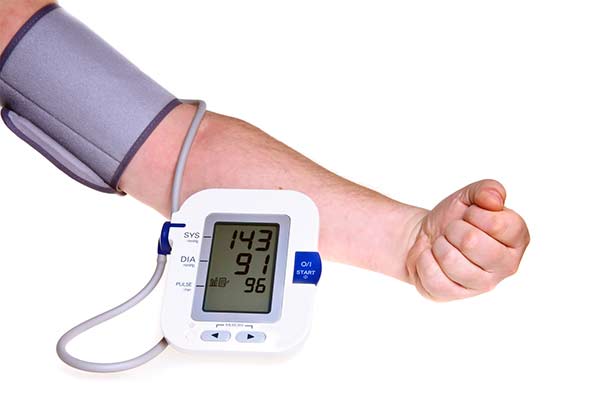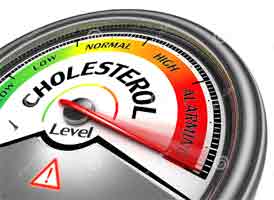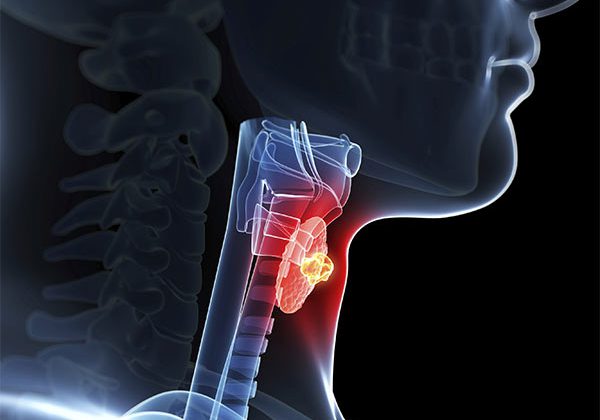Hypertensive Patients May Benefit from Folic Acid Supplements
Patients with low platelet count and high homocysteine levels reduced first stroke risk by 73 percent with the B vitamin
 Hypertensive adults with low platelet count who took a combined daily pill of both enalapril and folic acid saw a 73 percent reduction in their risk of first stroke compared to patients who took only enalapril daily, according to a study published in the Journal of the American College of Cardiology.
Hypertensive adults with low platelet count who took a combined daily pill of both enalapril and folic acid saw a 73 percent reduction in their risk of first stroke compared to patients who took only enalapril daily, according to a study published in the Journal of the American College of Cardiology.
Stroke is the second leading cause of death worldwide, and the number one cause of death in China. About 77 percent of strokes are first events, creating a need for better primary prevention efforts.
In an earlier published report from the China Stroke Primary Prevention Trial (CSPPT), researchers found that folic acid treatment could reduce first stroke risk by 21 percent on average in hypertensive adults by lowering total homocysteine levels—elevated levels are a risk factor for vascular disease. This present study is the first and largest of its kind to examine the association of elevated homocysteine levels and platelet count together—both of which play a significant role in the development of cardiovascular disease—with first stroke.
Researchers analyzed 10,789 participants from the CSPPT—men and women aged 45 to 75 years old who had hypertension or were on anti-hypertensive medication. The study excluded patients with a history of stroke or other major cardiovascular diseases. Participants were randomly assigned into two groups. In the first group, 5,408 patients received a combined daily oral dose of 10 mg enalapril and 0.8 mg folic acid, and in the second group, 5,381 patients received a daily dose of only the enalapril.
Among the total number of participants, 371 first strokes took place over a median follow up of 4.2 years. A total of 210 first strokes occurred in the enalapril-only group, and 161 first strokes in the enalapril-folic acid group.
“Our analysis has shown that baseline low platelet count and elevated homocysteine can jointly increase the risk of first stroke,” said Yong Huo, MD, director of the Heart Center of Peking University First Hospital in China, and the study’s senior author. “If the findings are further confirmed by prospective trials, we can raise the prospect that we can identify patients at high risk of developing first stroke by measuring both platelet and homocysteine, and we can remarkably lower stroke risk among this subgroup of patients with folic acid—a simple, safe and inexpensive treatment.”
Researchers found the risk of first stroke reduced from 5.6 percent to 1.8 percent among patients with low platelet count and high homocysteine levels, creating a 73 percent risk reduction. However, the folic acid had no effect among those with high platelet count and low homocysteine levels.
“If confirmed, these results have enormous public health implications given the high incident rate of stroke in many developing countries, in addition to China,” Huo said. “Based on our findings, we can detect hypertensive adults at particular high risk of stroke and incorporate a folic acid supplement tailored to individual genetic, nutritional and clinical characteristics. We are on the right path to figuring out cost-effective primary prevention strategies for stroke in China and beyond.”
In an accompanying editorial, J. David Spence, MD, director of the Stroke Prevention and Atherosclerosis Research Centre at Robarts Research Institute noted that, “Patients with lower platelet counts and higher homocysteine levels are more likely to have been at higher risk because they had vitamin B12 deficiency. Among folate-replete subjects, the main nutritional determinant of high homocysteine levels is B12 deficiency.”
Spence said, “The widespread belief that B vitamins do not reduce the risk of stroke is mistaken. This study not only invited confirmation of the benefit of B vitamins, but opens the door to wider applications.”
As a post-hoc analysis of CSPPT, limitations of the study include that residual confounding cannot be completely ruled out. Higher dosages of folic acid should be evaluated for any additional beneficial effects. Further studies should examine platelet parameters during the follow-up period and the utility of 5-methyltetrafolate, a more naturally occurring folate than folic acid.
Source:American College of Cardiology
Full bibliographic information
“Platelet Count Affects Efficacy of Folic Acid in Preventing First Stroke,” Xiangyi Kong, MD, Xiao Huang, MD, Min Zhao, MD, et al., VOL. 71, NO. 19, 2018, DOI: 10.1016/j.jacc.2018.02.072




